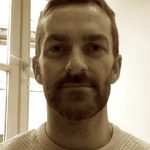Link to Pubmed [PMID] – 34929384
Link to DOI – 10.1016/j.neuroimage.2021.118795S1053-8119(21)01066-1
Neuroimage 2022 Apr; 249(): 118795
Language is a unique trait of the human species, of which the genetic architecture remains largely unknown. Through language disorders studies, many candidate genes were identified. However, such complex and multifactorial trait is unlikely to be driven by only few genes and case-control studies, suffering from a lack of power, struggle to uncover significant variants. In parallel, neuroimaging has significantly contributed to the understanding of structural and functional aspects of language in the human brain and the recent availability of large scale cohorts like UK Biobank have made possible to study language via image-derived endophenotypes in the general population. Because of its strong relationship with task-based fMRI (tbfMRI) activations and its easiness of acquisition, resting-state functional MRI (rsfMRI) have been more popularised, making it a good surrogate of functional neuronal processes. Taking advantage of such a synergistic system by aggregating effects across spatially distributed traits, we performed a multivariate genome-wide association study (mvGWAS) between genetic variations and resting-state functional connectivity (FC) of classical brain language areas in the inferior frontal (pars opercularis, triangularis and orbitalis), temporal and inferior parietal lobes (angular and supramarginal gyri), in 32,186 participants from UK Biobank. Twenty genomic loci were found associated with language FCs, out of which three were replicated in an independent replication sample. A locus in 3p11.1, regulating EPHA3 gene expression, is found associated with FCs of the semantic component of the language network, while a locus in 15q14, regulating THBS1 gene expression is found associated with FCs of the perceptual-motor language processing, bringing novel insights into the neurobiology of language.


